Idling is when you leave a vehicle parked and running, with yourself inside or outside a vehicle.
Idle speed is measured in RPM (revolutions per minute) and can also be thought of as the engine's rotational speed. You can read the car's idle speed on the RPM gauge.
An optimum idle should be high enough that the engine runs smoothly and maintains proper oil pressure while low enough that the engine does not needlessly burn excessive fuel.
A car should usually idle between 600 to 1000 RPM (revolutions per minute). However, sometimes vehicles will idle as high as 1500 RPM for a short period until the engine begins to warm up, at which point it will idle down to a more reasonable level.
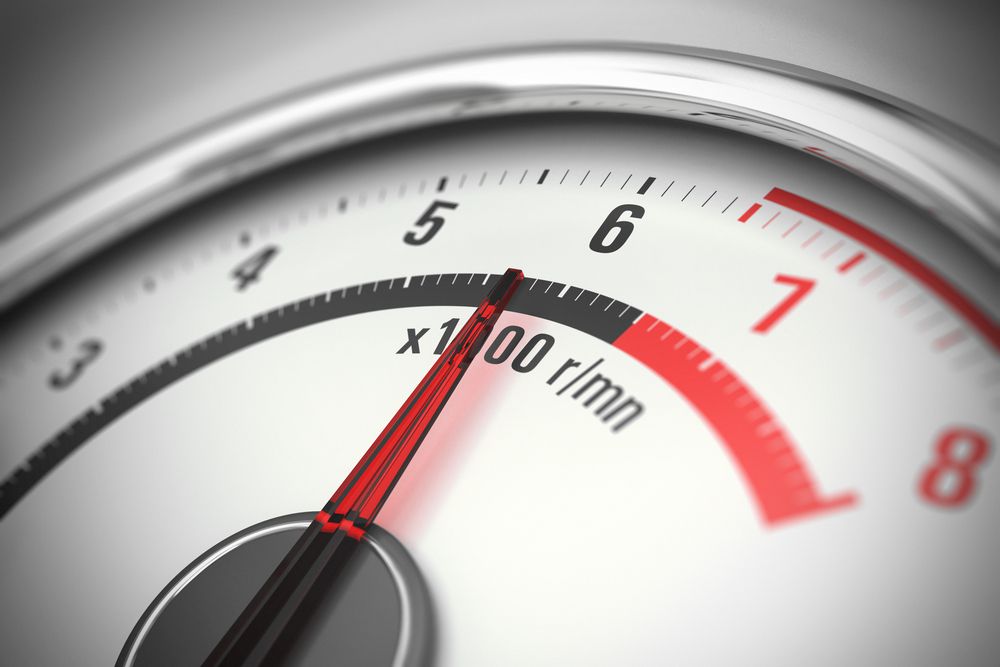 White car tachometer at 6000 rpm.
White car tachometer at 6000 rpm.
What Is The Ideal RPM When Idling?
The proper idle speed for most cars will typically fall between 600 and 1000 RPM. The benefit of a low rpm when idling is that it saves on needlessly burning extra fuel.
Idling at a high RPM can also be disruptive to neighbors, while an extremely low rpm may lead to a rough idle or even a stalled engine.
In modern vehicles, the car's idle speed is controlled by the vehicle's computer. The idle RPM is directly related to the amount of fuel and air that enters the engine, which the control module maintains with the fuel injection system and the idle air control valve.
What Should RPM Be When Starting Car?
When the engine is first started, a car's idle speed is typically higher than normal, typically between 1000 to 1200 RPM, then will idle down to between 600 to 800 RPM as the engine warms up to operating temperature.
The engines are tuned for a higher idle RPM at startup to prevent stalling, warm up the emission control components as soon as possible to operating temperature, and compensate for gasoline that doesn't atomize efficiently in a cold intake manifold.
What Should RPM Be When Driving?
A car's RPM when driving will depend on how fast the vehicle is going and what gear the vehicle's transmission is in.
In modern vehicles, the computer will maintain an RPM of around 2000 to 2800 revolutions per minute at 60 mph highway cruising on a flat road.
A vehicle with an automatic transmission with overdrive can cruise at as low as 1600 rpm at highway speeds, saving on fuel.
When passing, accelerating, or climbing a hill, an automatic transmission will gear down to create sufficient torque to maintain or increase the vehicle's velocity. Depending on the make and model of the vehicle, expect to see at least 5000 on the RPM gauge if the vehicle's accelerator pedal is pressed to the floor.
The driver controls the vehicle's RPM while driving with a manual transmission. Ideally, the driver should aim to maintain the lowest RPM while maintaining sufficient torque and speed.
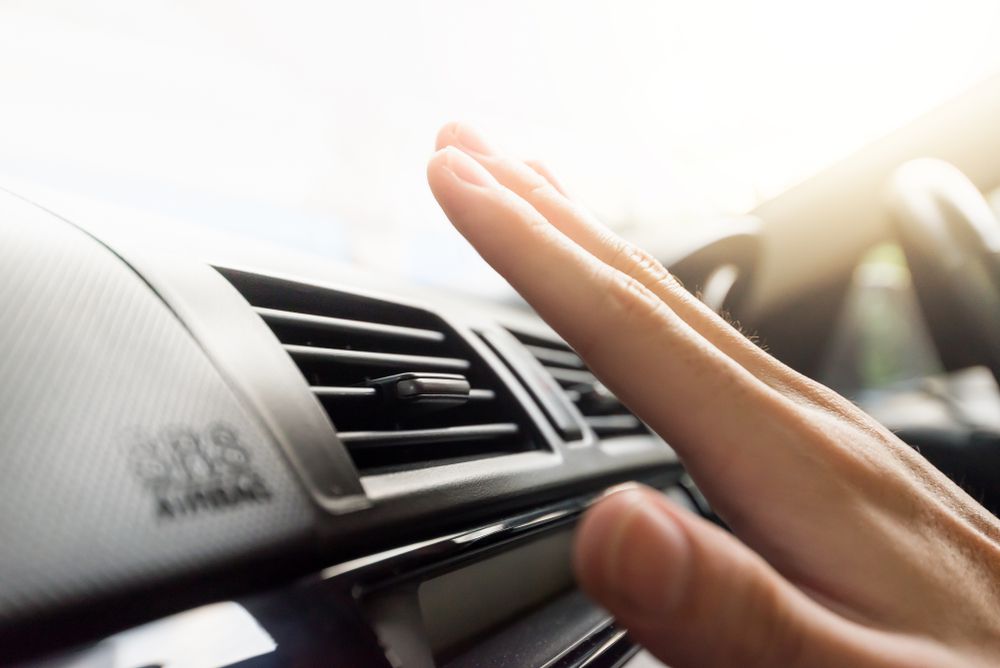 Feeling the cold air from the the car's AC vent.
Feeling the cold air from the the car's AC vent.
Normal Idle Rpm When AC Is On
A car's engine will typically idle higher than normal when the AC is on. For instance, if the car generally idles at around 800 rpm, with the AC on, it may idle up to 1000 rpm.
An AC compressor powers a vehicle's AC system.
The AC compressor is driven by a belt connected to the vehicle's crankshaft pulley, so the engine's speed directly affects the rate at which the AC compressor pulley turns.
Therefore, for the AC to properly cool down the vehicle's interior, the engine may need to idle higher, often around 1000 rpm.
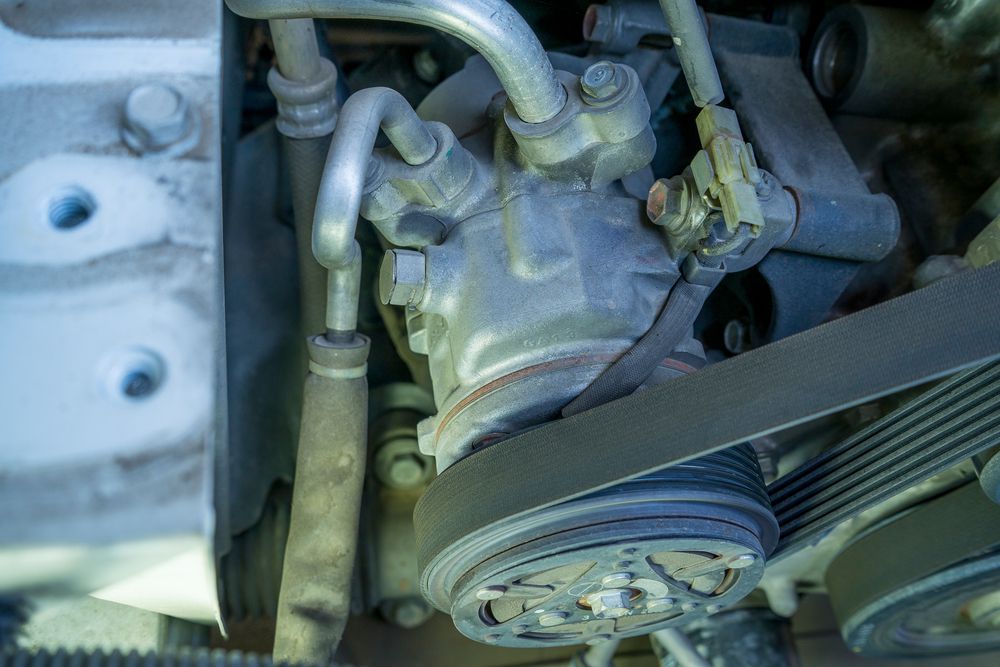 Car AC compressor with drivebelt on the pulley.
Car AC compressor with drivebelt on the pulley.
What Is Considered Low Idle?
Typically, low idle is when the car's rpm is less than 600 or 700 rpm. On the one hand, a low idle is desirable because the car will burn less fuel. But on the other hand, an engine that idles too low will take a long time to warm up the vehicle's catalytic converter and related emission control components, leading to an excess of harmful toxins entering the atmosphere.
What Causes Low Rpm At Idle?
Low rpm at idle is caused by insufficient fuel and air entering the vehicle's intake manifold.
In modern vehicles, low RPM at idle can be caused by a variety of things, including a malfunctioning idle air control valve, a problem with the throttle position sensor, a clogged fuel filter, a faulty fuel pump, or a problem with a sensor or the ECU (electronic control unit, i.e., computer).
On older vehicles with a carburetor, the engine's idle speed is controlled by an idle speed screw that can be screwed in or out to control the amount of air that enters the carburetor at idle. If not enough air enters the carburetor, the engine will have a low rpm at idle.
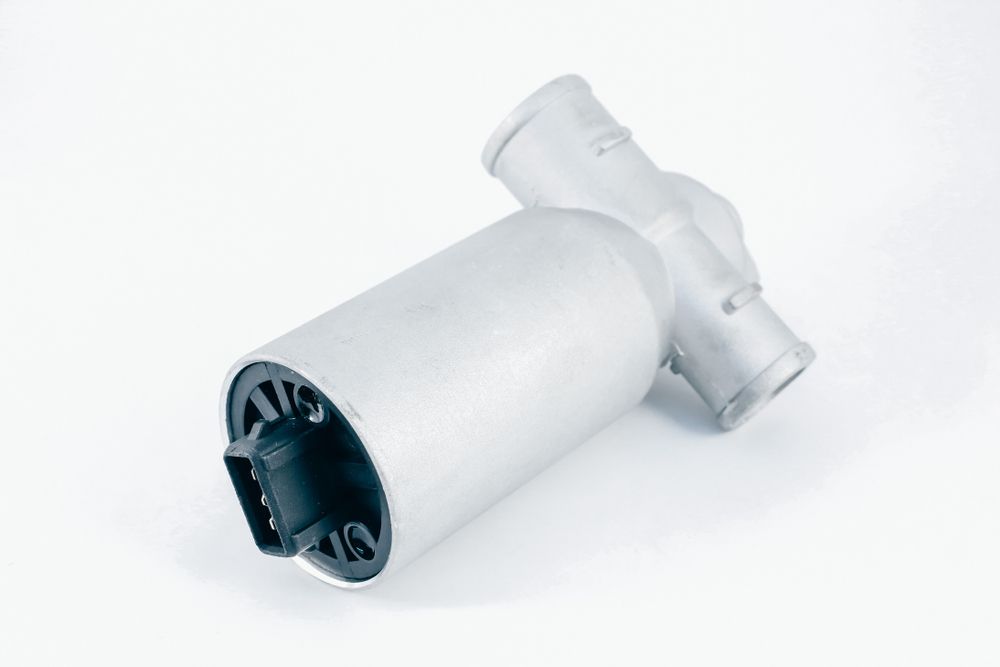 Idle air control valve
Idle air control valve
How Do You Fix Low Idle?
If the check engine light is on, a professional mechanic will first connect the vehicle to an engine code scanner.
Often the fix is simply replacing whatever sensor the code scanner says is faulty.
Amazon has a multitude of OBD2 scanners at affordable prices like this one here (paid link).
If there is no check engine light, the problem can be difficult to troubleshoot.
It could be an improperly tuned or faulty computer. In which case, an ECU reset may fix the problem.
The problem will often be an idle control valve with carbon build-up on fuel-injected vehicles.
The carbon build-up in the idle control valve hinders its operation but luckily can be cleaned quite easily as the valve is easily accessible on most cars.
A low idle caused by a malfunctioning throttle position sensor can also sometimes be fixed by cleaning it.
The throttle position sensor is easily accessible, making cleaning it a relatively easy job.
To clean the idle air control valve or the throttle position sensor, you can use carburetor cleaner, available at any local auto parts store.
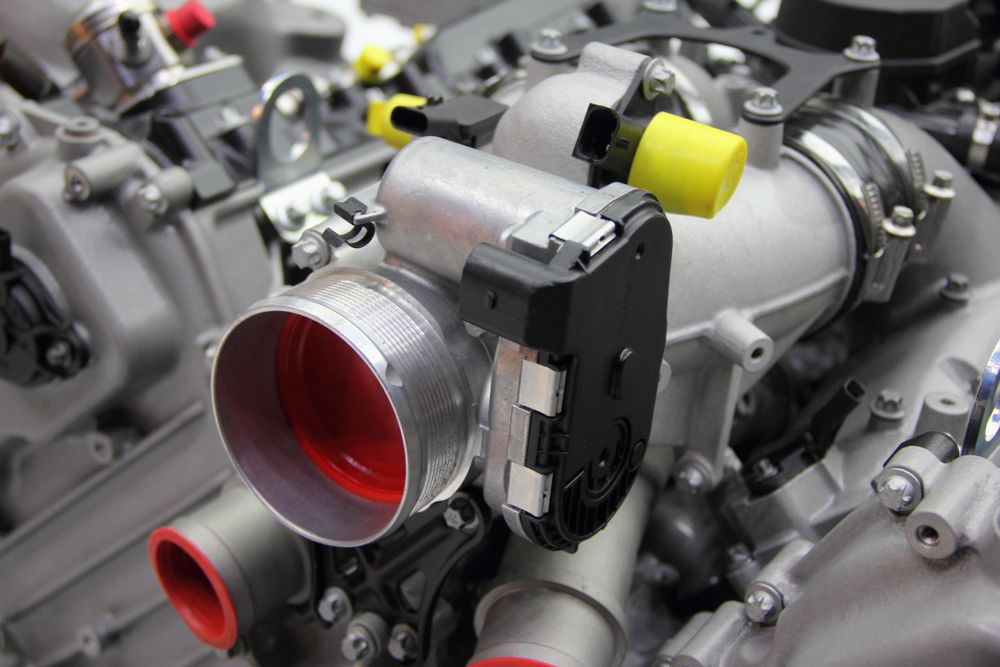 Throttle position sensor on the side of the throttle body.
Throttle position sensor on the side of the throttle body.
Is It Bad If Your Car Idles High?
It is bad if your car idles high for various reasons, including poor fuel economy, excessive noise, extra wear and tear on engine components, and safety risk.
If your car idles high while stopped at a red light, when you take your foot off the brake pedal, your car will accelerate very quickly, which will be difficult to control in tight traffic and may lead to an accident.
Why Does My Car Idle At 2000 RPM?
An idle speed of 2000 rpm is high and could be due to various reasons. For example, high idle speed could be caused by:
- Faulty or dirty idle air control valve: the idle air control valve ensures the engine gets the air it needs to idle properly by acting as a bypass for the throttle body valve that is closed at idle.
- Vacuum leak: vacuum leaks on carburated vehicles cause a high idle because they allow excessive air into the intake, which draws more fuel into the motor leading to a high idle.
- Dirty or malfunctioning throttle position sensor or throttle body valve: if the throttle position sensor or throttle body is malfunctioning, your engine could receive too much fuel.
- Improperly tuned idle screw: on a carburated engine, the idle screw could be adjusted improperly, leading to too much air and fuel entering the intake at idle.
Most car owners that are mechanically inclined are perfectly capable of fixing the above problems with basic tools and carb cleaner.
Other things like a bad fuse or oxygen sensor could also be to blame and will often throw off trouble codes that will trigger your vehicle's check engine light.
What Causes A Car To Idle Up And Down?
A car that idles up and down often has a problem with its idle air control valve.
The idle air control valve is often the culprit in idling problems, and a pulsating or fluctuating idle is no different. Other problems causing a pulsating idle include a problem with the powertrain control module, a vacuum leak, or other issues with the vacuum system.
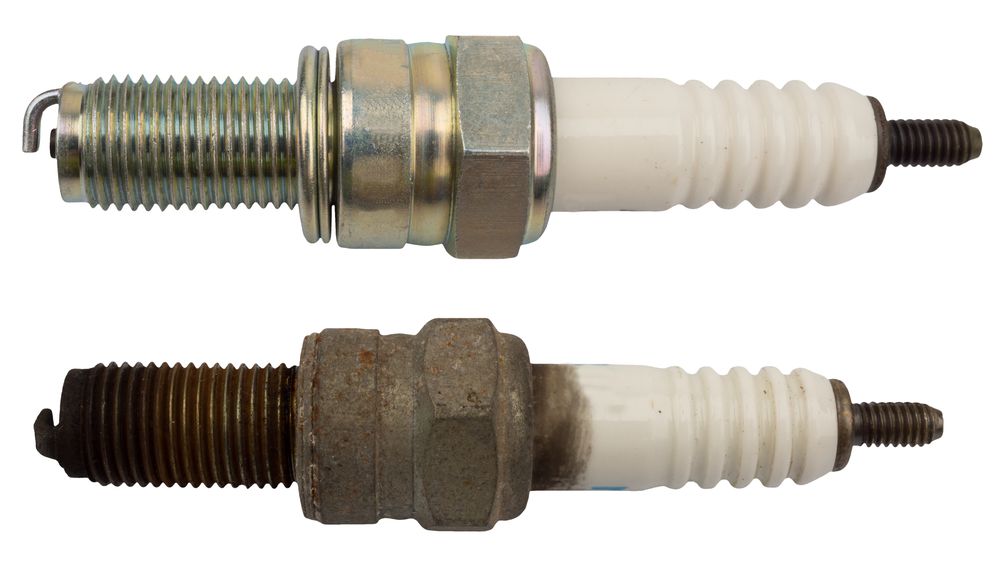 Fouled sparkplug alongside a new sparkplug.
Fouled sparkplug alongside a new sparkplug.
Car Idles Rough But Drives Smooth?
A rough idling car that smooths out at higher RPMs can lead to annoying slow acceleration and constant worry that your engine will stall at a stop sign or red light.
Some things that will lead to a car idling rough but smoothing out once you start driving include faulty spark plugs and, like many other idling problems, perhaps a problem with the idle air control valve or throttle body.
Conclusion
A car should idle between 600 to 1000 rpm. A car may idle slightly higher than this when it is cold and start to warm up the engine and emissions systems as quickly as possible before idling down once it has warmed up to operating temperatures.